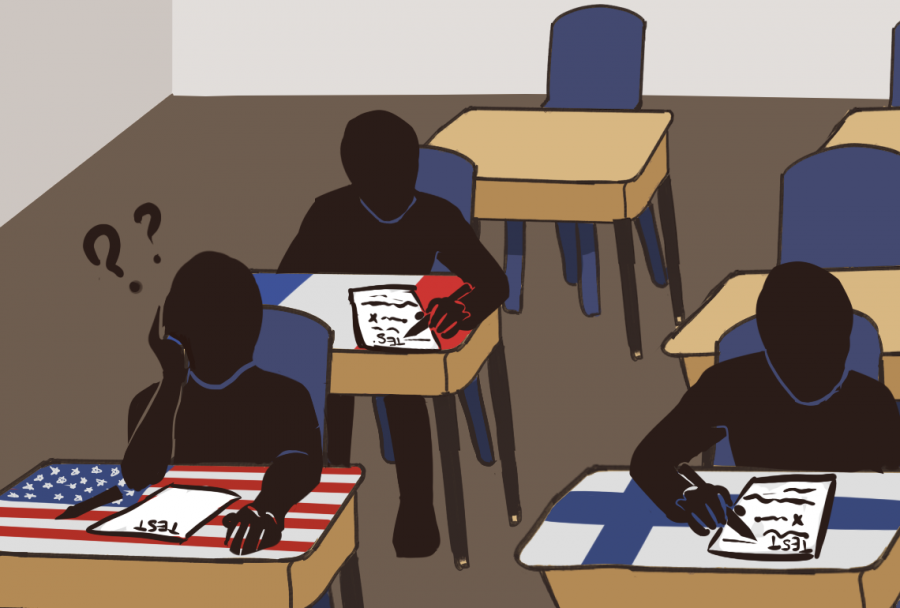American students lag behind internationally
January 26, 2019
The United States is often seen as an economic, military, and social powerhouse throughout the world. According to the Congressional Budget Office, the United States spends more than double the money on military and defense than any other country on a yearly basis. The U.S is a consistent force in leading improvement movements in underdeveloped countries worldwide, being a permanent member of the United Nations Security Council and has been increasingly involved in affairs in other countries since the 20th century. However, these massive expenditures towards defense and a prioritization of helping others leaves the U.S with less budgeting for other federal sectors like education.
According to Barry McGraw, the Director of Education for the Organization for Cooperation and Development, the U.S. led industrialized countries as little as twenty years ago with the highest percentage of 25-34 year-olds who obtained a high school diploma. Since then, the U.S has fallen to 12th place in those rankings. In a worldwide standardized test taken in 2015, the PISA, taken by 71 major countries, 9th graders from the U.S ranked 35th in math proficiency and 24th in reading. These unimpressive showings at a worldwide level indicate there is definitely room for improvement in the American education system.
This drop in education innovation in America is caused by a multitude of factors. A study by the National Center for Education Statistics found that 14% of U.S schools are overcrowded and exceed their recommended capacity. In several states, programs that focus on gifted and talented students are deprioritized and underfunded, resulting in intelligent kids being forced into doing standardized material rather than further enriching their talent. Forty-six of the fifty U.S states have high school curriculums that do not qualify students for public university, according to a study by the Center for American Progress. Since the Department of Education has only loose restrictions and standards for education at the federal level, different states have varying qualities of curriculum, causing a wide range in the value of education young students are receiving nationwide. Additionally, some parents argue that children’s free time to develop social skills is limited by pointless busy work assigned to be done at home.
A few countries have already taken steps to improve test scores and create better learning environments for students. Germany boasts a 92% enrollment rate in early childhood education (before the age of five), while the U.S has only a 41% rate. This near universal early childhood education can help many kids get an edge in classes later in life, giving them a head start towards mastering basic concepts and learning social skills. Finland has dedicated fifteen minutes breaks in between forty-five minute learning sessions. These breaks help kids remain focused during class time instead of becoming distracted during long continuous sessions of class time. It also gives kids time to socialize with other students and be physically active. The government in France is even currently debating removing homework from school curriculum entirely. These other countries are attempting education reform movements to help their students, and it is likely that once the United States makes a push to restore their education system to its former international prestige, we could see some of these changes happening in American public schools.



